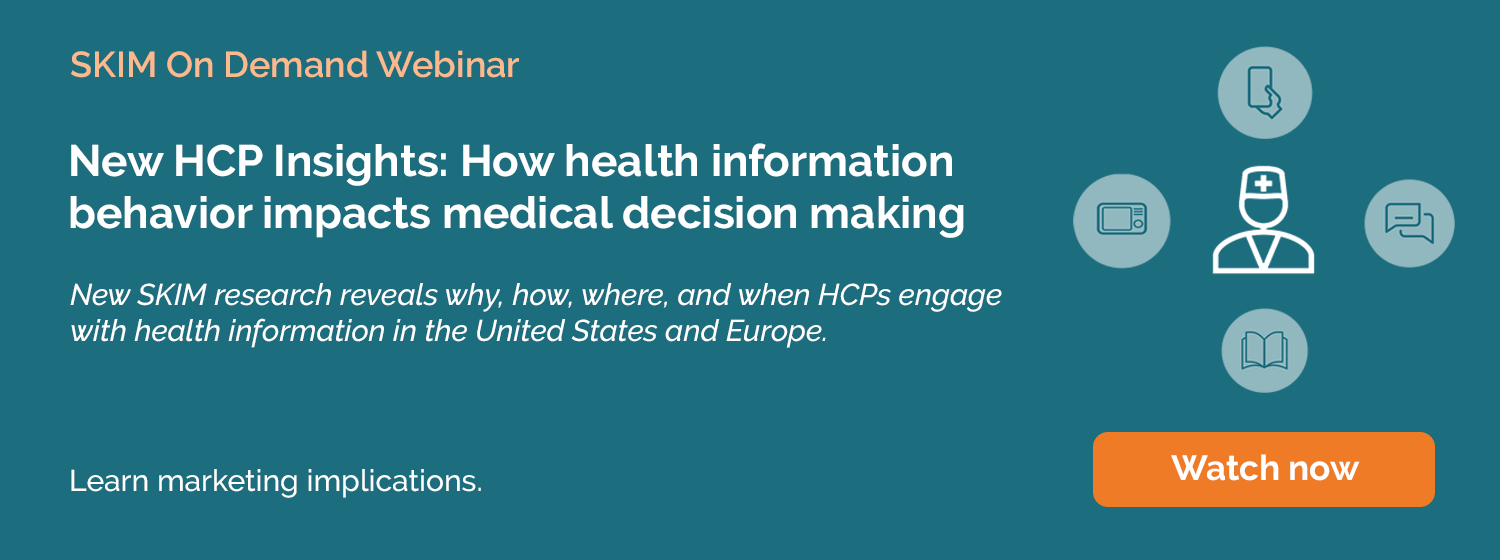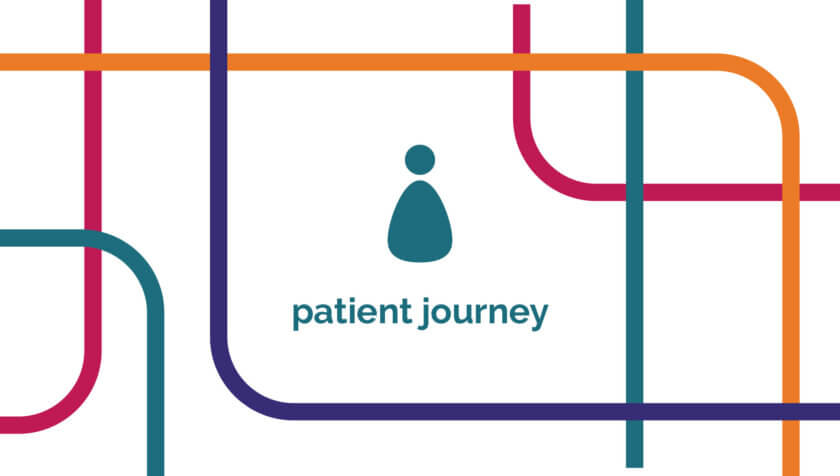The changing nature of health information behavior is challenging pharmaceutical and medtech companies and their insights approaches.
Do you feel the same need to go “beyond the obvious” – the surface – of how patients engage with health information?
The health information behavior framework reveals behavior and unmet needs in more depth and detail than ever before. Drawing from a rich well of academic research, it illuminates the patient experience, as well as the influence of health information on medical decision-making along the patient journey.
Over the past few months, we introduced the marketing implications of health information behavior and discussed the impact of health information behavior on patient experiences.
In this blog, we reveal the practical applicability and outcomes of the health information behavior framework, including the actionable insights pharmaceutical and medtech marketers need: patient types, information tipping points, preferred sources and channels, unmet needs, as well as other potential marketing opportunities.
Read on to learn of two real-world examples of how marketing teams in the dermatology and oncology indications leveraged health information behavior insights to reveal the what, when, why, and to what end patients engage with health information. Discover how this new level of behavioral insights can help you better define strategies which could positively impact the patient journey and medical decision-making.
The treatment and information journey of a chronic skin condition
A leading pharmaceutical company needed to understand the patient experience during the treatment pathway, which, due to the chronic nature of the condition, can be long and winding. Our client wanted to know what patients go through, the key milestones and touchpoints, and, importantly, the type of information patients search for and encounter.
So, we set out to map the treatment landscape and patient journey for this chronic skin condition. By including a set of specific questions from the health information behavior framework in the in-depth patient interviews, we were able to dig deeper and more targeted into the patient information journey and unmet needs.
Embedding health information behavior into the research approach uncovered:
- Critical information touchpoints and tipping points: the ‘ebb and flow’ of when patients search for, are open to receiving, or actively avoid information
- Preferred information sources and channels
- Unmet patient needs
For our client, these insights represented new engagement opportunities to provide information, create new services, or optimize existing services. In a broader perspective, the insights contributed to a strong foundation for tailor-made communication (strategies) and the product launch.
Patient types in the oncology patient journey
A company focusing on oncology wanted to obtain thorough insights into the experiences and needs of oncology patients. Individuals who had been diagnosed with a specific type of cancer were invited to talk about their experiences with an experienced moderator in a semi-structured interview.
During this research, our health information behavior framework was specifically applied in the analysis phase to distinguish between patient segments. Considerable differences in involvement with their condition and engagement with information were found, which could be explained through the lens of health orientation and health information behavior. In short, a distinction was made between patients with a high level of disease engagement and those with a low(er) level of disease engagement. The difference between them hinged on factors such as age (young vs. older), education level (higher vs. lower), and their willingness to look up information and think along with the physician (shared decision-making).
While the differences between the patient types were quite interesting on their own, the expression of these differences really came to life in the patient experiences throughout the treatment journey. From initial diagnosis to treatment plan and all the way to treatment considerations and follow-up, the differences between the patient types were quite telling.
For instance, patients with high(er) levels of disease engagement actively searched for information and discussed with their physician the options with regards to surgery and follow-up adjuvant treatment. Conversely, patients with low(er) levels of disease engagement rarely wanted to have a say. Instead, they took a more passive approach. These patients would rather listen to the physician to hear what needed to be done and leave the decision-making to the doctor altogether.
Overall, the health information behavior insights equipped our client with recommendations on how to differentiate between patient types (high versus low disease engagement). The insights also enabled the client to tailor their upcoming brand and product communication, information and services to patients’ specific needs and wants.
Final takeaways
Health information behavior is not static, but rather ebbs and flows throughout the patient journey. As exemplified by the case studies above, the health information behavior framework reveals and helps to understand when patients might actively seek, be receptive to, or avoid information. Understanding the what, how, why, and where of health information in turn helps to make sense of what drives patient (non-)engagement, decision-making, and unmet needs. Moreover, as illustrated by the dermatology case, information touchpoints and tipping points in information behavior provide engagement opportunities for pharmaceutical companies.
SKIM’s health information behavior approach thus contributes directly to developing strong communication and messaging strategies that resonate with patients. In sum, health information behavior helps to paint a more detailed picture of the patient experience, patient types, treatment decision-making, as well as unmet needs. Understanding patient information behavior and needs in depth and detail is one more step towards patient centricity, that is, seeing and approaching things from a patient perspective and being able to provide better support to patients.
In our next blog, the focus shifts to the health information behavior of physicians. We will discuss their behavior and needs, the channels and sources they prefer, as well as the impact of health information on the relationship between physician and patient and what this means for pharmaceutical companies.
—
The SKIM healthcare team has embarked on an ambitious project to harness the knowledge of health information in academic literature, together with our decades of healthcare expertise and robust analytical frameworks. Subscribe to the SKIMspiration newsletter so you don’t miss the next blog in our series.
Can’t wait for the next blog? Reach out to schedule a consultation with the SKIM Health Information Behavior team.

—
This blog is based on the doctoral dissertation In Sickness And In Health: A Study Of Health Information Behavior And Use Among Flemish Middle-Aged And Older Adults, submitted by the author to Ghent University, Belgium, in 2021.





